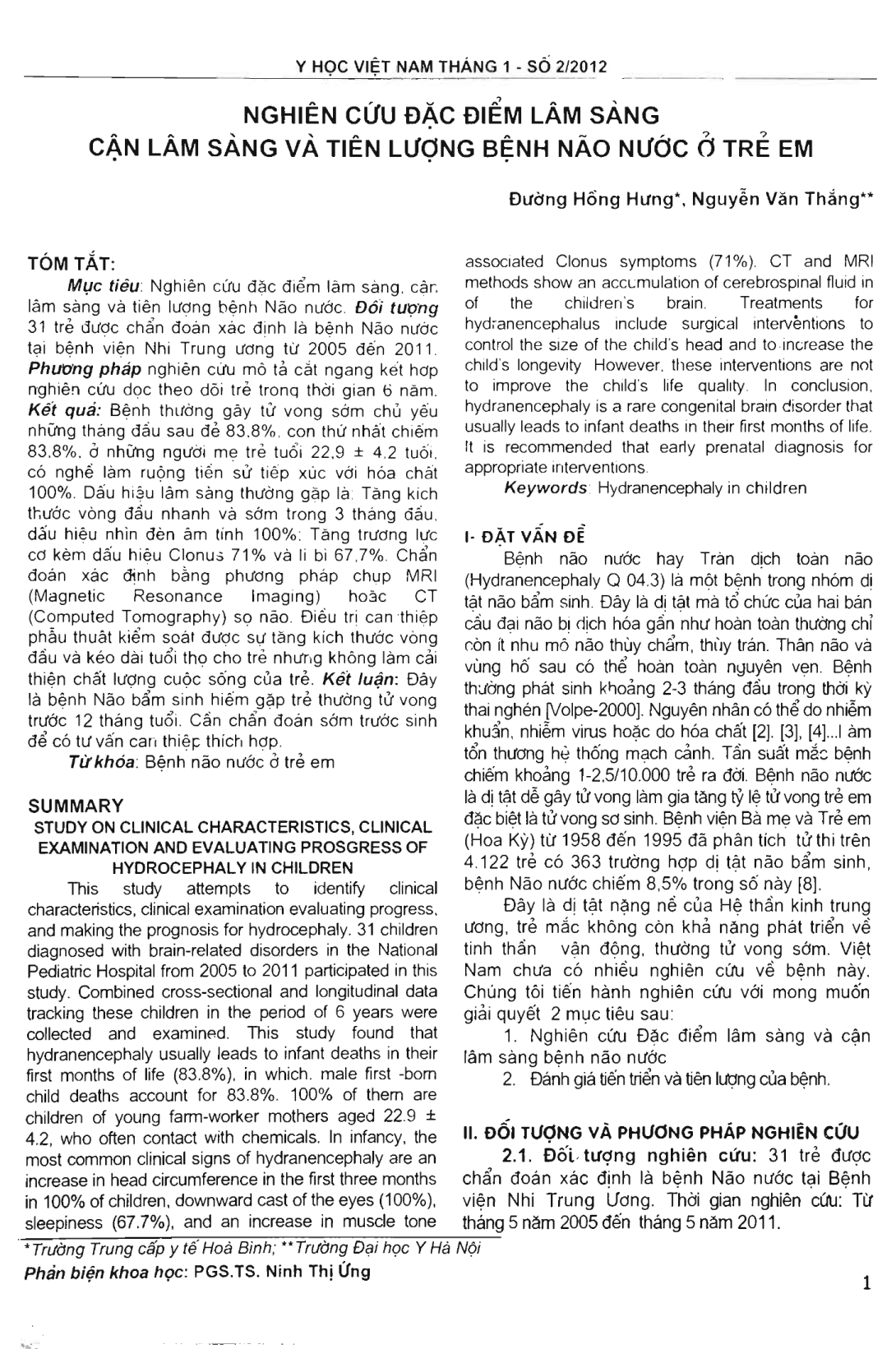
This study attempts to identify clinical characteristics, clinical examination evaluating progress, and making the prognosis for hydrocephaly. 31 children diagnosed with brain-related disorders in the National Pediatric Hospital from 2005 to 2011 participated in this study. Combined cross-sectional and longitudinal data tracking these children in the period of 6 years were collected and examinp,d. This study found that hydranencephaly usually leads to infant deaths in their first months of life (83.8 percent), in which, male first-born child deaths account for 83.8 percent. 100 percent of them are children of young farm-worker mothers aged 22.9 + or - 4.2, who often contact with chemicals. In infancy, the most common clinical signs of hydranencephaly are an increase in head circumference in the first three months in 100 percent of children. downward cast of the eyes (100 percent), sleepiness (67.7 percent), and an increase in muscle tone associated Clonus symptoms (71 percent). CT and MRI methods show an accumulation of cerebrospinal fluid in of the children's brain. Treatments for hydranencephalus include surgical interventions to control the size of the child's head and to increase the child's longevity However, these interventions are not to improve the child's life quality. In conclusion, hydranencephaly is a rare congenital brain disorder that usually leads to infant deaths in their first months of life. It is recommended that early prenatal diagnosis for appropriate interventions.
- Đăng nhập để gửi ý kiến
